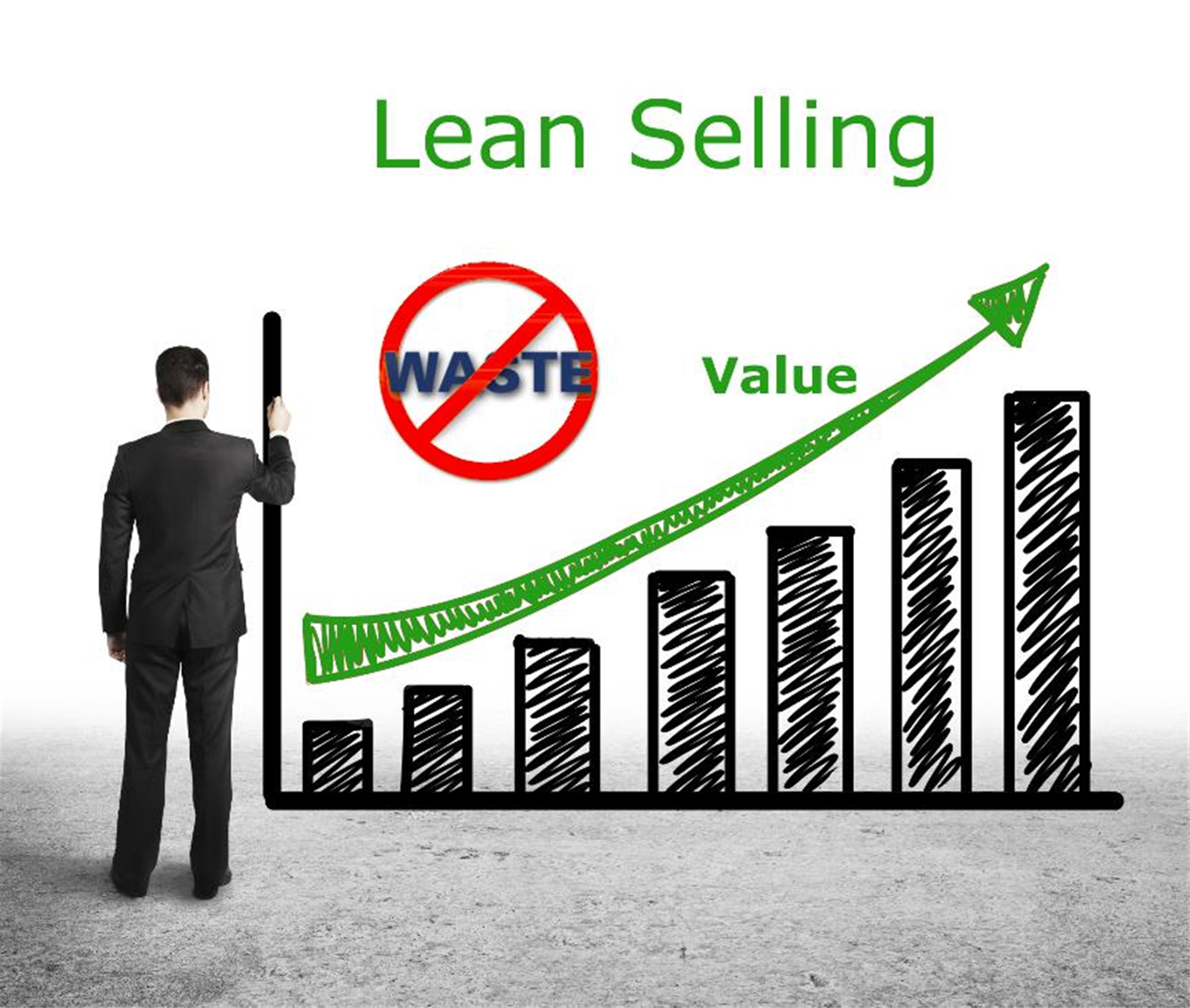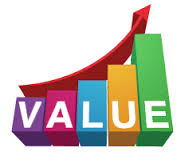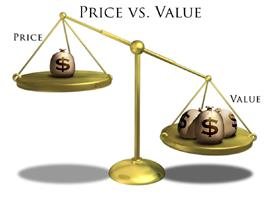
By Wayne Moloney
Lean has long been associated with manufacturing and credited to Toyota. However, I challenge both premises and am a believer that Toyota's role in post-war Japan was to 'commercialise' a concept that was probably started by Henry Ford. Further, while it no doubt started as a manufacturing 'tool', it has since evolved into a set of management principles that can and have been applied effectively across a broad range of industries and business operations.
Lean is about increasing capacity by designing operational processes so the business optimally responds to customer demand and then to utilise the additional capacity to add greater value and/or increase output. And this applies to sales!
The reality is, every function or service provided by any department or organisation is a process that can be documented, standardised, and most importantly, improved - and that includes Sales.
The concept of Lean in sales has developed slowly and is still alien to many salespeople and sales managers. However, there is an increasing awareness of how Lean can help businesses deliver greater revenue at reduced cost and therefore increased profit. So what is Lean Sales?
At its core, Lean is based around 3 key principles:
- Deliver Value (as defined by the
 customer) while,
customer) while, - Reducing Waste, and
- Continually Improving the processes that deliver the Value.
While improving any one of these principles will have a positive effect on your business, the 3 are interrelated so a small improvement in each will have a synergistic effect.
For example, we cannot improve a process if we do not know what waste needs to be removed, and we cannot remove waste if we do not know what the customer values, and what steps in the process are helping deliver value.
DELIVERING VALUE
The first step in adopting Lean sales is to know what our customer values for without this knowledge it is impossible to identify waste and improve any process.
 Value = What you get/What you give up
Value = What you get/What you give up
It all starts with the 'Voice of the Customer'. All too often we, as salespeople or business managers think we know what the customer wants. But do we know what they value? In my experience the answer to that is a resounding 'MAYBE'.
Like beauty, value is in the eye of the beholder. The same feature of our product and benefit that it delivers may be seen very differently by different customers. Ultimately, value is anything our client is prepared to pay for and the goal of a business (marketing and sales) is to clearly understand this from both a market and individual customer perspective...and this might not just be a financial transaction. Time is one of the most valuable things we have and getting prospective clients to spend time with us is a form of payment.
Having worked with thousands of businesses over the years, I have found there are some generic values desired by customers.
 First is price. I know there is a strong argument that people buy on value, not on price, but in many instances this is still where our buyers see 'value'. As our product or service becomes more and more commoditised, our customer will become more likely to make decisions based around the dollars that are exchanged and/or the time they must commit to the transaction. So while the price is so often seen as the monetary transaction, it may also relate to the ease of purchasing (ie time spent). Simply being the cheapest won't help if we haven't clearly understood that time (for example), is seen as value.
First is price. I know there is a strong argument that people buy on value, not on price, but in many instances this is still where our buyers see 'value'. As our product or service becomes more and more commoditised, our customer will become more likely to make decisions based around the dollars that are exchanged and/or the time they must commit to the transaction. So while the price is so often seen as the monetary transaction, it may also relate to the ease of purchasing (ie time spent). Simply being the cheapest won't help if we haven't clearly understood that time (for example), is seen as value.
Quality is another 'simple' value that is often taken for granted. At any price-point there is an expected level of quality that is defined by the individual. As a general rule, quality is associated with price and the higher the price the better the quality expected. One error made by many businesses is not clearly understanding the level of quality expected at a price-point and either under-delivering (creating a poor customer experience) or over-delivering (generally at a cost to the business).
Communication - If we accept time is a valuable commodity, it follows that in simplifying communication and the time taken in the process, there is value being added. This can come in many forms - the time and speed of our responses to clients and the quality of documentation that we provide; not just with the product, but throughout the buying process. In the service industry this can be particularly important and can be a key differentiator between firms.
Packaging & Labelling. This is of particular importance if we are an integral part of our clients supply chain. While there is often a minimum requirement simply to be considered, improving our packaging and labelling to improve the logistics efficiencies of our clients, can separate us from competitors.
Many businesses value Flexibility. This is often seen as counterintuitive to Lean, but provided the flexibility is within defined processes and procedures it can deliver significant value to our clients. This flexibility may, for example, be in payment terms, design, or in delivery. If our business is inflexible in creating flexibility for our clients, we are missing a significant opportunity to add value to the customer's experience.
Technical support and after-sales service is extremely valuable for some clients, especially those who have a critical reliance on the product or service you provide. Ongoing support is often the most significant criteria for buyers.
Recently I have seen businesses and consumers start to place more value on the environmental credentials of suppliers. While many businesses in Australia breathed a sigh of relief when the carbon tax was repealed, others had already experienced the benefits, both from a marketing and operational perspective.
REDUCING WASTE
Lean identifies seven areas of waste in the manufacturing process. I believe all of these can be applied to sales, and in fact all operational areas of a business. The seven wastes can be remembered with the acronym TIMWOOD - Transport, Inventory, Motion, Waiting, Over-Processing, Over-Production and Defects.
Transport' is obvious in a manufacturing supply chain, but in sales not so. But think about the time wasted in travel. We see salespeople making face-to-face calls on prospects and clients when their time and the client's time could have been saved by using technology better - a simple phone call, Skype or teleconference.
Inventory' - I often face arguments that in sales there is no inventory, but stop and think. What are our leads? Leads are the raw material of sales - they are our inventory. Because they are not tangible they are often overlooked. Leads need to be managed properly by only working on those leads that offer the greatest potential ROI. Have a process to get rid of the poor opportunities early in your sales cycle and continually access your 'inventory' to remove those leads that have failed to meet your evaluation criteria.
 'Motion' or the unnecessary movement of goods and paperwork. A smooth process is about flow, which means having a sales process that is in alignment with your prospect or clients buying process. However you define the buyer's journey, you need to make sure your sales process is in sync. I use 4 high-level steps in defining the buyer's journey - Awareness, Exploration, Analysis and Agreement. Within these there can be several sub-steps depending on the business, but regardless of how you define the buyer's journey it is important not to get out of step with them. Trying to force an inflexible sales process (square peg) onto your clients buying process (round hole) creates blockages that waste time and results in lost sales.
'Motion' or the unnecessary movement of goods and paperwork. A smooth process is about flow, which means having a sales process that is in alignment with your prospect or clients buying process. However you define the buyer's journey, you need to make sure your sales process is in sync. I use 4 high-level steps in defining the buyer's journey - Awareness, Exploration, Analysis and Agreement. Within these there can be several sub-steps depending on the business, but regardless of how you define the buyer's journey it is important not to get out of step with them. Trying to force an inflexible sales process (square peg) onto your clients buying process (round hole) creates blockages that waste time and results in lost sales.
Waiting' is another waste that is often overlooked in sales. Not having a well-defined process to follow-up leads makes prospects wait. Similarly, and again related to process, you need to ensure that you have adequate resources to support the proposal process in a timely manner. Furthermore, if you do not have a good understanding of your buyers process, you could be waiting unnecessarily for information, other decision-makers involvement or additional information necessary to progress.
Over-Processing' This can take a number of forms in sales, but the one I see most is around sales management. All too often management are asking salespeople to complete reports that do not help in the sales process, i.e. reports are generated simply because "we have always had these reports". With modern CRM systems, businesses need to 'personalise' the process and not simply adopt the 'system default'.
Now who would think you can 'Over-Produce' sales, but generating sales that cannot be filled is a significant generator of waste in businesses. Similarly, and this is where sales and marketing need to be in close alignment, generating more leads than can be handled creates waste and does nothing for your reputation in the market.
Lastly 'Defects'. This can be seen in many forms in sales. We can simply have defective sales processes or defective salespeople (usually as the result of poor induction, training and management processes). Similarly, if we have not qualified our raw materials well, that is our leads, we can have defective leads in the pipeline.
As can be seen, there are many examples of the 7 traditional wastes in sales. Helping to reduce these will help your salespeople increase the amount of time they spend working on real opportunities which is the purpose of Lean - to increase capacity.
DEFINING PROCESS
Sales is a process. Once we know what the customer values and what is classified as waste, we can start to analyse our internal processes.
Firstly we need to identify VALUE ADDED functions - these are the things that the customer is willing to pay for, either with money or time. They are not always obvious and may be different for different clients. There will be a foundation of Value Added functions that are common to all clients, but the more prescriptive the product or service you provide, the more details and specific you need to become in defining these.
That leaves us with the NON-VALUE ADDED functions - this is "waste" and is what the customer is not prepared to pay for. Reducing the non-value added components (or waste), allows us to 'free up' or create extra capacity.
Bear in mind that every business has certain essential activities which may not be regarded as 'value' by the customer, but are necessary to simply 'keep the lights on'. These are your NECESSARY NON-VALUE ADDED functions and include things like invoicing, scheduling, admin, warehousing, HR, regulatory issues (HACCP, safety, ISO9001 etc). Every company will have certain Necessary Non-Value Adding functions that can possibly be reduced, but never completely eliminated.
Earlier on I mentioned that the PURPOSE of Lean is to INCREASE CAPACITY, because by doing so, it will allow you to either INCREASE OUTPUT or, ADD GREATER CUSTOMER VALUE, or both.
By having created the EXTRA capacity, you are now in a position to offer your customers additional VALUE.
SUMMING UP
Lean requires us to understand the Voice of the Customer - what are they telling us they value? It requires us to focus everything on those few things that are critical to them. It means we don't waste their time or ours on those aspects that don't represent any value to them. In fact, we differentiate ourselves by creating greater clarity for the client.
By Wayne Moloney
*************************
If you valued this article, please share via your Twitter, LinkedIn, Google+ and Facebook social media platforms. I encourage you to join the conversation or ask questions. So feel free to add a comment on this post - I promise to respond. Please follow my LinkedIn post page and follow me here on the Strategic Selling Group. I also recommend you follow my associates in the SMA Sales Masterminds.
Not a Strategic Selling Group member? Please feel free to SUBSCRIBE HERE